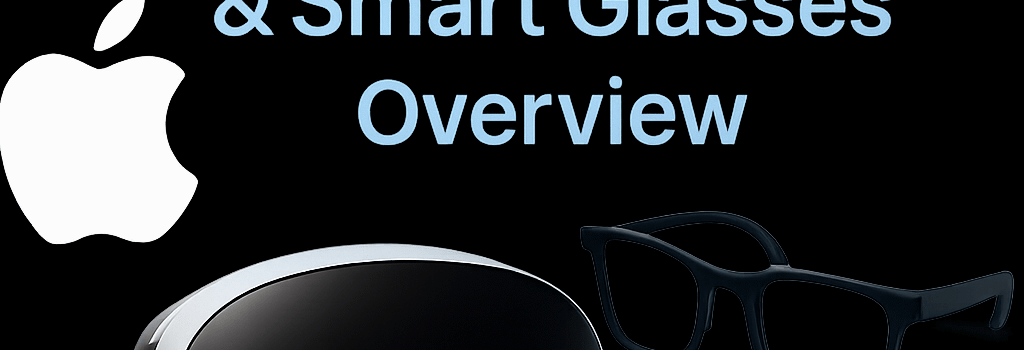Apple’s XR Roadmap to 2028: Vision Air & Smart Glasses Overview

Apple’s first foray into spatial computing with Vision Pro in early 2024 proved the company’s commitment to head-mounted displays despite tepid initial sales and a premium $3,499 price tag. According to renowned Apple analyst Ming-Chi Kuo, Apple still views XR as a “next major trend in consumer electronics,” with a multi-year device roadmap covering everything from incremental Vision Pro updates to featherweight smart glasses indistinguishable from traditional eyewear.
Launch Timeline: Vision Pro 1.5 in 2025, Vision Air in 2027
Kuo’s supply-chain–sourced projection shows no new XR hardware arriving in 2026. Production ramps begin again in Q3 2025 for a mid-cycle Vision Pro “1.5” upgrade, followed by a new entry-level headset dubbed Vision Air in Q3 2027.
- Vision Pro 1.5 (Q3 2025): Retains the current industrial design and 4K-per-eye Micro-OLED displays, but swaps the Apple M2 SoC for the next-generation Apple M5. Expected spec upgrades include:
- 12-core CPU (4 × performance + 8 × efficiency cores)
- 24-core GPU with 10-TFLOPS graphics throughput
- 35 TOPS Neural Engine for advanced on-device AI
- 20 % lower power draw, extending battery life by up to 15 %
- Vision Air (Q3 2027): Positioned below Vision Pro with a flagship iPhone-class processor (likely A18 Bionic), and weight reduced by over 40 % via:
- Glass-to-plastic optics with pancake lenses
- Magnesium-alloy chassis (titanium cut to manage cost)
- Sensor count trimmed from 12 to 6 (eliminating redundant depth cameras)
- Estimated price: sub-$1,500
Vision Pro 2: Mid-2028 and the M5 Leap
Apple’s true Vision Pro sequel is slated for mid-2028. Beyond the M5 SoC migration, the unit will feature a ground-up redesign focused on ergonomics and cost efficiency:
- Optics: Next-gen micro-LED panels delivering 1,200 nits per eye at 4,096×4,096 resolution.
- Weight: Target under 550 grams, down from 650 g, achieved via duralumin frame and polymer-reinforced carbon fiber.
- Thermal: Vapor-chamber cooling with graphite heat spreader for sustained performance.
- Price: Estimated 20 % reduction vs. original Vision Pro.
True Smart Glasses: Two-Stage Rollout
Apple’s ambition extends to an almost invisible AR form factor. Kuo describes a two-phase path:
- Display-free “Ray-Ban-like” Glasses (Q2 2027)
- No waveguides or screens, just audio, camera, video recording, AI environmental sensing.
- Voice control (Siri Gen-4) and hand-gesture UI via on-board IMUs and ToF sensors.
- Ship volume: 3–5 million units in 2027.
- True AR Smart Glasses (2028)
- See-through waveguide displays with 2D/3D overlay support.
- Heterogeneous compute: A18 Bionic + dedicated NPU for real-time SLAM and object recognition.
- LiDAR-assisted eye-tracking and foveated rendering to optimize GPU load.
Supply Chain & Manufacturing Challenges
Apple’s ambitious XR timeline depends on several advanced manufacturing suppliers:
- TSMC 3nm Process for the M5 SoC, ramping N5P yields to 90 % by 2026.
- Litemax or Sony for micro-LED panels, with 30 % yield improvements at 0.5″ resolution.
- Corning® Gorilla Glass Victus replacements with high-index polycarbonate optics.
- Foxconn & Pegatron assembling headsets in Vietnam to diversify from China.
Software Ecosystem & Developer Tools
Underpinning Apple’s hardware push is the evolution of visionOS 2.0:
- ARKit 6 & RealityKit 3: Enhanced plane detection, occlusion APIs, and volumetric capture.
- Metal 3 GPU acceleration with tiled resources for foveated rendering.
- Integration with on-device LLMs via Apple Neural Engine for contextual AR suggestions.
- Developer tools: Reality Composer Pro, Xcode Vision templates, Unity & Unreal Engine plug-ins.
Market Outlook & Competitive Landscape
According to IDC, the global XR headset market will surpass $50 billion by 2028, with unit shipments reaching 25 million. Apple’s premium pricing contrasts with Meta’s Quest 3 (~$500), Microsoft’s HoloLens 3 (enterprise focus), and Snap’s Spectacles AR (developer beta). Gartner notes that Apple must balance brand cachet with cost reductions to achieve mainstream adoption.
“Apple’s iterative approach—from Vision Pro to Vision Air—reflects a savvy playbook: use high-end devices to refine software and supply chains before scaling down for mass market,” said Morgan Stanley analyst Kate Lee.
Additional Analysis: Developer Adoption & Content Strategy
Developer momentum is critical. Apple plans to seed key AR apps—navigation, remote assistance, spatial design—to showcase visionOS’s real-world utility. Partnerships with Adobe (substance painting in AR), Autodesk (BIM in spatial view), and Epic Games (Unreal Editor in VR) will drive professional use cases.
Additional Analysis: Privacy, Security & Ethical Implications
As cameras and AI sensors proliferate, Apple emphasizes on-device processing and secure enclave encryption for depth maps and biometric data. iOS Security policies extend to visionOS, enforcing per-app camera access, private passkey storage, and differential privacy in user analytics.